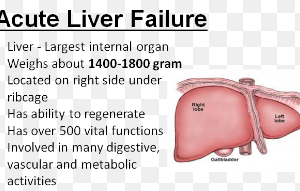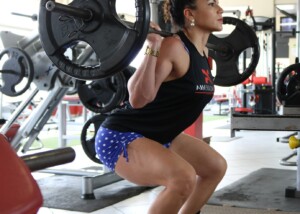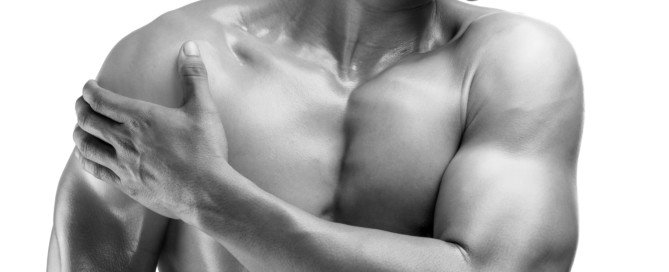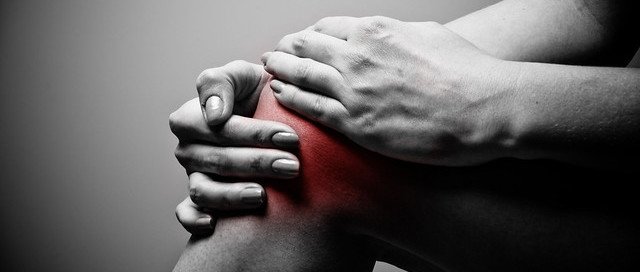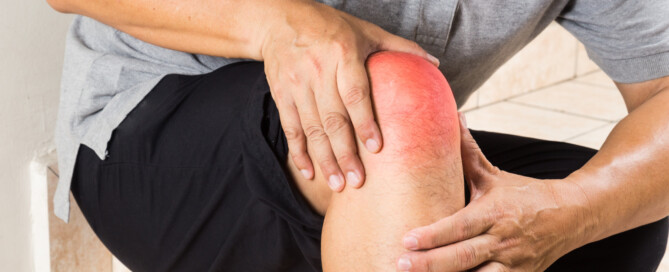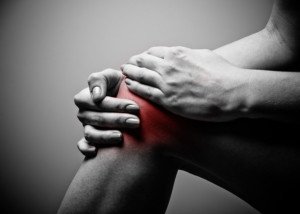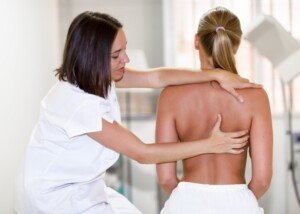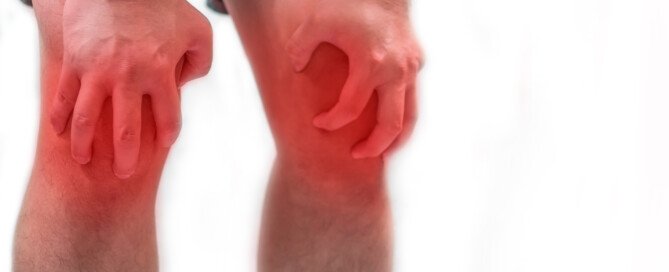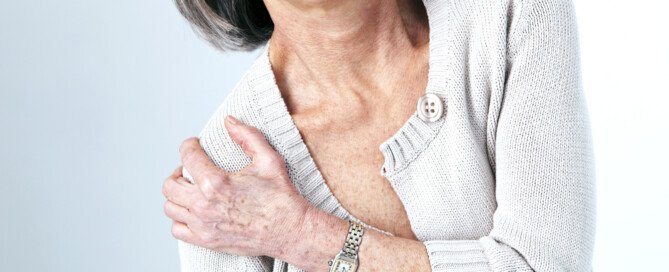Home Based Boot Camp Workout: How to Maximize Results

As a personal trainer, I’ve advised clients on how to design a boot camp right in their home for workouts.
But you need to also know how to make the most of the equipment and exercises.
A boot camp workout can go for 30-60 minutes. Choose some exercises, then blast them out to exhaustion or near exhaustion (depending on the intensity level you thrive on and/or your goals).
Exercises can be done one at a time (brief rests in between), or doubled or tripled up consecutively: a series of doubles or triples with short rests (e.g., 45-60 seconds) in between.
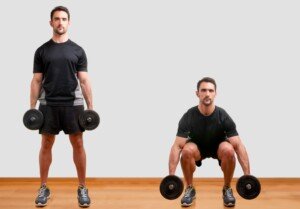
Shutterstock/ruigsantos
Any given exercise should not exceed 30-60 seconds. If you can go longer, then a modification must be made, such as an increase in speed, height, depth or resistance.
If you want exercise failure to be based on fatigue or repetitions, make sure that you reach your desired level of failure (exhaustion) within 30-60 seconds.
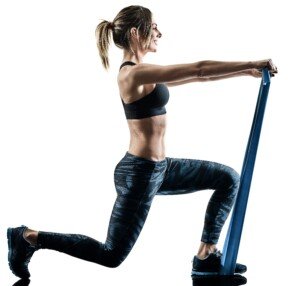
Shutterstock/OSTILL is Franck Camhi
Going longer means you’ll be entering into more of a pacing mode rather than performing all-out or near-all-out effort.
If you can execute an exercise for only 15 seconds, that’s fine too; as long as it’s your hardest effort.
Fifteen seconds of your best scissor jumps or weighted burpees are a real killer.

You can also line up, say, 10 exercises for consecutive work and execute each one with your fiercest effort for 30-60 seconds, immediately moving into the next exercise.
When the round is completed, march in place or pace slowly for 2-4 minutes, then repeat the round several more times.
The reasoning behind the brief rests (relative to the effort), is that this maximizes fat burning. Plus, it will generate tremendous cardiovascular benefits.
Maximizing Fat Burning
Short bursts of high intensity exercise create a stunning “after-burn,” or elevated resting metabolic rate-leading to fat loss that can’t be matched by long duration, pace-based cardio!

Freepik.com
This after-burn has been shown by numerous studies to last anywhere from several hours to 48 hours after the training session has ended.
For example, Schuenke et al, in the European Journal of Applied Physiology (March 2002), reports on a study in which the after-burn lasted 48 hours.
If maximizing fat loss is your chief goal, then engage in the schemes outlined here.
If you want a less strenuous workout but love the boot camp philosophy, increase the rest periods, modify the exercises so that they don’t leave you breathless, and/or extend the duration of some exercises.
Never underestimate what you can do with your bodyweight and a handful of simple tools!
 Lorra Garrick has been covering medical, fitness and cybersecurity topics for many years, having written thousands of articles for print magazines and websites, including as a ghostwriter. She’s also a former ACE-certified personal trainer.
Lorra Garrick has been covering medical, fitness and cybersecurity topics for many years, having written thousands of articles for print magazines and websites, including as a ghostwriter. She’s also a former ACE-certified personal trainer.
Why There’s No Such Thing as a Short Waist
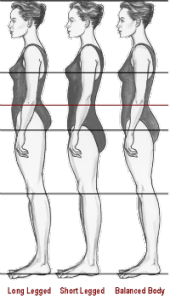
Do you think you’re “short waisted” (or “long waisted”)?
What you really mean is a short torso! As in, “short torsoed,” (though there’s no such word as “torsoed,” but at least “torsoed” makes anatomical sense.
When someone says they have a short waist, they’re referring to a brief distance between their waistline and shoulders.
This section of the body is the torso or trunk. When people talk about these proportions, it is almost always in reference to wardrobe/clothing, or exercise.
In either case, the very incorrect terminology of “short waisted” always comes up.
Think about this for a moment: A waist cannot be short. The waist goes around you; its dimension is that of circumference, not a length of point A to point B.
This is why the waistline is measured with a tape measure that can be easily wrapped around the circumference, rather than a ruler, that can be used to measure the distance from the waist/hip to the shoulder (for trunk or torso length).
Of course, no actual measurements are necessary; just look at yourself or someone and you can usually tell if they have a short torso/trunk or not (relative to the rest of their body).
The waist cannot be short or long. Remember, its dimension is in the form of circumference or girth.
Thus, a waist can be small, medium or big; skinny, plump or large; you get the picture. Sometimes the waist is referred to as tight or flat. But to refer to it as short or long is erroneous.
One time I was in a gym and a man nearby was studying his body in the mirror, chatting to another man.
The first man was motioning with his hands, the span between his midsection and shoulders. He was all legs. He told his buddy, “I’m so short waisted.”
I thought, “No, you’re short trunked.”
Google “short waist” and see what comes up. Link after link after link with this incorrect terminology. Of course, when you speak these words, most people will know what you mean, but maybe not all.
If you have short thighs (femurs), would you say, “I’m so short kneed?” or, “I have short knees”?
If you have long upper arms, would you say, “I have long elbows”?
It’s the exact same approach when you say “short/long waist” instead of “torso” or “trunk.”
So next time you want to describe vertical body length in the midsection, say torso or trunk.
Because there is no such thing as a short or long waist. The waist does not have length. It has girth, which is a different form of measurement.
 Lorra Garrick has been covering medical, fitness and cybersecurity topics for many years, having written thousands of articles for print magazines and websites, including as a ghostwriter. She’s also a former ACE-certified personal trainer.
Lorra Garrick has been covering medical, fitness and cybersecurity topics for many years, having written thousands of articles for print magazines and websites, including as a ghostwriter. She’s also a former ACE-certified personal trainer.
Surgery vs. Cortisone Injection for Torn Rotator Cuff

A torn rotator cuff doesn’t always cause pain, and severe pain from the rotator cuff doesn’t necessarily mean a tear.
Cortisone vs. surgery is not as absolute as you think.
“Rotator cuff tears are extremely common,” says John-Paul H. Rue, MD, orthopedic sports medicine surgeon with Orthopedics and Joint Replacement at Mercy Medical Center in Baltimore, MD.
“Not all rotator cuff tears are symptomatic and certainly not all tears need surgery,” continues Dr. Rue.
“A cortisone injection is often used to help determine if the pain that someone has is due to inflammation in the shoulder or truly from the rotator cuff tear.”
What exactly is the rotator cuff?
It’s comprised of four tendons and the muscles that they are attached to. The muscles are:
• Supraspinatus
• Subscapularis
• Teres minor
• Infraspinatus
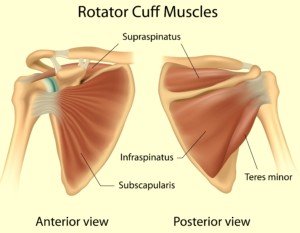
Shutterstock/Alila Medical Media
These are small muscles and are not primary movers when it comes to force production.
For example, the medial deltoid muscle is the primary mover when you lift a dumbbell out to your side.
However, the supraspinatus and its tendon assist with this motion.
“In some cases you may have had a rotator cuff tear for some time without much difficulty or limitations from it, and then something happens, like a new injury or overuse activity, causing acute or sudden pain,” explains Dr. Rue.
“In these cases, a cortisone injection can be very useful to decrease the inflammation and allow you to rehabilitate your shoulder and hopefully get you back to where you were.
“If someone has continued pain despite a cortisone injection, or has severe weakness due to a tear, surgery to repair the rotator cuff tear may be required.”
 Dr. Rue specializes in prevention and treatment of sports and exercise injuries. His primary focuses are knee, shoulder and elbow injuries including ACL and cartilage injuries, rotator cuff injuries and overuse tendonitis.
Dr. Rue specializes in prevention and treatment of sports and exercise injuries. His primary focuses are knee, shoulder and elbow injuries including ACL and cartilage injuries, rotator cuff injuries and overuse tendonitis.
 Lorra Garrick is a former personal trainer certified through the American Council on Exercise. At Bally Total Fitness she trained women and men of all ages for fat loss, muscle building, fitness and improved health.
Lorra Garrick is a former personal trainer certified through the American Council on Exercise. At Bally Total Fitness she trained women and men of all ages for fat loss, muscle building, fitness and improved health.
.
Top image: Shutterstock/xmee
Knee Pain Only When Lying Down: Causes & Solutions
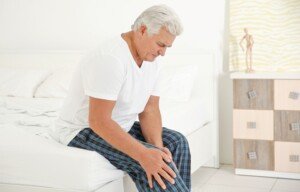
There are several conditions that can cause your knee to hurt only when lying down, and especially overnight after you’ve been in bed for several hours.
It seems odd that a knee would hurt mostly or even only when a person lies down.
After all, the human knee is subject to loads of pressure just from walking. We take that for granted.
The knee is actually the most unstable joint in the body. This is why self-defense classes teach students to “go for the knee” with any number of foot strikes.
A good strike by a 100 pound person to this inherently unstable joint can bring down a 300 pound brute.
If your knee hurts only when you lie down, or, chronic day pain gets notably worse overnight, there can be several reasons.
“Depending on the position of the knee, some inflammatory conditions such as tendinitis or bursitis may be worse when lying down,” says John-Paul H. Rue, MD, orthopedic sports medicine surgeon with Orthopedics and Joint Replacement at Mercy Medical Center in Baltimore, MD.
“Pain from osteoarthritis and rheumatoid arthritis may also worsen at night lying down as the muscles around the knee relax,” continues Dr. Rue.
“Other less common conditions such as ankylosing spondylitis may cause knee pain at night.”
Ankylosing spondylitis is a form of arthritis that primarily affects the spine, but can also affect other joints.
If you have this you probably already have back pain and stiffness.
“In general, placing the knee in a position with the support of additional pillows may lessen the pain associated with these conditions,” says Dr. Rue.
Experiment which positioning and pillow configuration works best for you.
Chances are pretty high that the best position will involve your knee bent at at least a 150 degree angle (a little more than midway between a straight leg and a leg bent at 90 degrees).
“Additionally, altering the medication timing for NSAIDS or other arthritis medications may help you get through the night,” says Dr. Rue.
“If you always find yourself waking up in the middle of the night with pain, modifying the time that you take your evening dose of medication may help extend the time of pain relief through the night.”
 Dr. Rue specializes in prevention and treatment of sports and exercise injuries. His primary focuses are knee, shoulder and elbow injuries including ACL and cartilage injuries, rotator cuff injuries and overuse tendonitis.
Dr. Rue specializes in prevention and treatment of sports and exercise injuries. His primary focuses are knee, shoulder and elbow injuries including ACL and cartilage injuries, rotator cuff injuries and overuse tendonitis.
 Lorra Garrick has been covering medical, fitness and cybersecurity topics for many years, having written thousands of articles for print magazines and websites, including as a ghostwriter. She’s also a former ACE-certified personal trainer.
Lorra Garrick has been covering medical, fitness and cybersecurity topics for many years, having written thousands of articles for print magazines and websites, including as a ghostwriter. She’s also a former ACE-certified personal trainer.
Top image: Shutterstock/Africa Studio
Can a Knee Injury Cause a Tumor?
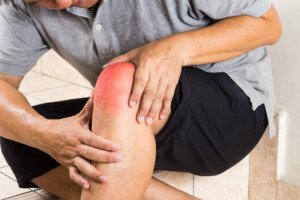
Just what actually is going on when an X-ray for an injured knee shows a tumor?
First off, a tumor is a mass of body tissue. It can be malignant or benign. (more…)
Both Knees Sore for No Reason: Causes and Solutions
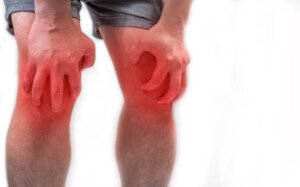
“There are many reasons that both of your knees could be sore for presumably no reason,” explains John-Paul H. Rue, MD, orthopedic sports medicine surgeon with Orthopedics and Joint Replacement at Mercy Medical Center in Baltimore, MD. (more…)
Acute Pain Three Months after Rotator Cuff Surgery: Causes?

Have you found that your rotator cuff pain has really kicked up since you began your after surgery rehabilitation?
There are reasons for this. (more…)
It’s Okay to Keep Your Preventive Double Mastectomy Secret
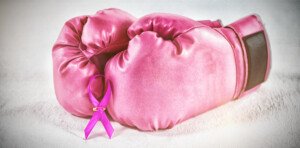
I’m planning on a preventive double mastectomy in about six weeks and am keeping it a secret.
In fact I don’t intend on revealing to anyone this procedure even long after I’m fully recovered. (more…)
Mannequins Causing Eating Disorders: Truth or Nonsense?

Super thin mannequins have been around for at least 40 years; why NOW are they causing eating disorders?
Or is it just easier to blame a prop and ignore the real factors behind anorexia nervosa?
Let’s give credit where credit is due when it comes to what fuels an eating disorder:
For example, a dysfunctional family in which a young girl feels pressured by her controlling parents to excel and be perfect.
• She is stripped of having any control over her life.
• She is genetically hardwired to be a perfectionist.
• Cultural norms and the entertainment industry can be predisposing factors.
But mannequins in stores hardly define society’s expectations of what a female should look like.
Many kids and teens simply conclude that mannequins are merely props that a store uses to hang clothes on.
A mannequin will not “cause” an eating disorder.
“The cause of anorexia nervosa is a complex issue, and there is no specific cause (yet determined) of anorexia nervosa,” says Linda Centeno, PhD, clinical psychologist, and assistant director of the Koch Center in NJ that specializes in eating disorder treatment.
“We do not know why we all are exposed to ‘thin’ in the media from young ages, and most individuals never go on to develop anorexia nervosa.
“Most experts agree that an eating disorder is not about weight. Instead, anorexia arises due to a combination of personality, genetics and environment (such as culture, social and family situations).”
Many anorexics were NOT overweight prior to the initial development of their disorder; in fact, a naturally thin girl can develop anorexia nervosa.
It makes more sense that if we have two girls, both 15 and 5’3”, and one weighs 200 and the other weighs 100 (naturally), that the heavy girl will be the one relishing the mannequin’s body, not the thin girl.

Shutterstock/Nomad_Soul
“Individuals with anorexia generally display obsessive behaviors with respect to food and dieting and often exhibit an extreme drive for perfectionism,” explains Dr. Centeno.
“Being able to control one’s body and food intake can substitute for wanting to be able to control the other ‘real’ difficult issues in one’s life (such as relationship issues, trauma, family problems, other stressors, etc.).”
Kids will recognize mannequins for what they are: a hybrid woman and hanger, made as thin as possible to save on manufacturing costs. At least that’s what I thought growing up.
Imagine the extra costs if every size 00 mannequin was made with more material to appear like a size 8 or even 6.
It may not seem like a lot more material per single mannequin, but multiply that out by thousands and thousands of mannequins made by the factory.
It’s also logical that stores order them as thin as possible so that they can then cram as many as possible up on display boxes.
This benefits the manufacturer: More mannequins purchased means more profit!
To translate this to society’s expectations of a woman’s body is just way beyond the moon.
Go ahead, read online forums for people with anorexia nervosa.
The home lives that many describe they come from will unnerve you.
It’s way too easy to include store mannequins as a contributing factor.
Even Hollywood’s biggest female stars don’t look like store mannequins.
In fact, most Hollywood celebrities and recording artists do NOT have ultra-thin bodies.
Take a look at Lily-Rose Depp below. She has admitted to having anorexia nervosa and makes Jennifer Aniston — who’s been accused of being too thin — look plump!

Lily-Rose is as thin as a mannequin. But how many Hollywood stars are built like her?
Okay, we have some who come close, such as Angelina Jolie and Victoria Beckham, and there are a handful of other contemporary starlets who are “scary skinny.”
But they are just a small fraction of ALL the big-name film and TV stars and recording acts out there.
Some of the biggest stars have heavy thighs: Beyoncé, Rihanna and Kim Kardashian.
If teens and young women are so desperate to emulate these people, why aren’t we blaming teenage obesity on Beyoncé, Rihanna, Kim, Adele and Melissa McCarthy?
Name one Victoria’s Secret model who looks like a mannequin or Lily-Rose Depp.
Mannequin Research
Dr. Eric Robinson and his team from the University of Liverpool’s Institute of Psychology, Health and Society believe that store mannequins are encouraging unrealistic body ideals.
Dr. Robinson’s study was published in the Journal of Eating Disorders, and notes that the average size of the male mannequins in his research were significantly bigger than the average female’s body – and that only a small number of male mannequins looked underweight.
This seems to blow the money-saving, space-saving explanations out the window.
On the other hand, imagine a man strolling through a clothing department and seeing six-foot male mannequins with bodies that in real life would equate to 120 pounds.
Shoppers are heavily influenced by what they see. He is more likely to buy attire that hangs on a more realistic looking plastic body.
So why doesn’t this concept apply to female shoppers?
Here’s a plausible explanation: Men do not equate masculinity with super thin male physiques, since masculinity brings to mind strength and power.
However, femininity CAN be associated with twig-thin mannequins since feminity is NOT associated with brawniness and physical force.
Think of butterflies, flowers and pretty snowflakes vs. trucks, horses and chainsaws.
Dr. Robinson says in his report, “We became interested in this topic [ultra-thin mannequins] after seeing some news report about members of the general public noticing that some mannequins in fashion stores were disturbingly thin.”
Dr. Robinson’s team surveyed two high streets in the United Kingdom, finding that the size of female mannequins represented an extremely underweight woman.
Growing up, I’d see these ridiculously thin mannequins all the time at May Company, Sears, JCPenney and in little shops in the mall.
Nobody in that generation wanted to look like a plastic humanoid with clothes on.
And I doubt that anyone in this generation wants to look like Lily-Rose Depp.
“Because ultra-thin ideals encourage the development of body image problems in young people,” says Dr. Robinson’s paper, “we need to change the environment to reduce emphasis on the value of extreme thinness.”
According to Dr. Robinson’s (and many others’) line of logic, if all female mannequins were built like Beyoncé or MMA fighter Ronda Rousy, we’d have thousands of teen girls and young women striving to achieve heavy thighs and an overall curvy look or muscular physique.
 Dr. Centeno works with adolescents and adults. In her private practice her specific clinical expertise also includes anxiety and panic disorder, depression, relationship issues and sexual abuse.
Dr. Centeno works with adolescents and adults. In her private practice her specific clinical expertise also includes anxiety and panic disorder, depression, relationship issues and sexual abuse.
 Lorra Garrick has been covering medical, fitness and cybersecurity topics for many years, having written thousands of articles for print magazines and websites, including as a ghostwriter. She’s also a former ACE-certified personal trainer.
Lorra Garrick has been covering medical, fitness and cybersecurity topics for many years, having written thousands of articles for print magazines and websites, including as a ghostwriter. She’s also a former ACE-certified personal trainer.
Source: sciencedaily.com/releases/2017/05/170502095122.htm
Can Breast Cancer Go Away on Its Own Without Treatment?



